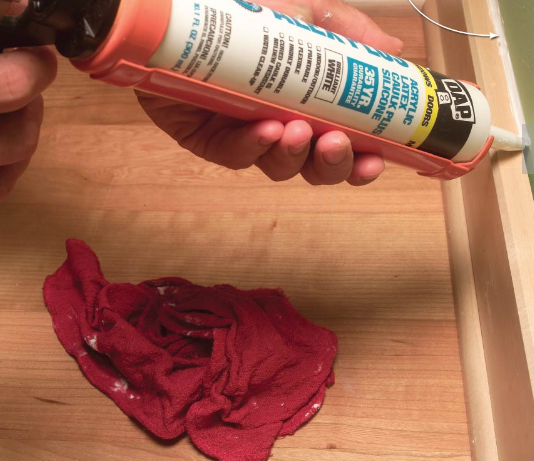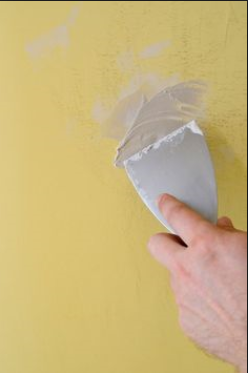A paint colour consultation and top quality paint and painting tools are powerful assets in our interior design arsenal of tools. Interior design these days can involve the client or home owner doing some of the work. Many clients have good DIY skills and many do not. With all the information available now with video instruction on how to repair things many people are willing to start to learn to paint their own homes. Likely they do not want to tackle two story walls, but might be ready to paint say, a bedroom. Whether your hire a professional painter or you are a Do It Yourself painter, there are a few things that are crucial to a professional looking paint job.  The first is that cheap paint is poor economy. Buy the good stuff. Good quality paints cost more because they have more of the components that determine covering ability, durability, fade resistance, drying time, smoothness and splatter. They are also much easier to use than lower quality paints. they also look good once you have finished painting, and you will be happy You should still always apply two coats, even when using top quality paint. The second coat goes on faster and more easily than the first, and does not use as much paint as the first coat because second time around, the wall is not as absorbent. but you will be surprised at how many little thin areas there are on the first coat. Some new paints are self-priming. This does not mean self-priming on brand new drywall, but over previously painted surfaces. This is particularly useful when painting a newer home that has only builder’s paint, which is often very low quality. The first time it is painted with your choice of colour, as opposed to “one size fits all”, the walls are still so absorbent that it is almost as if the walls have never been primed or painted.
The first is that cheap paint is poor economy. Buy the good stuff. Good quality paints cost more because they have more of the components that determine covering ability, durability, fade resistance, drying time, smoothness and splatter. They are also much easier to use than lower quality paints. they also look good once you have finished painting, and you will be happy You should still always apply two coats, even when using top quality paint. The second coat goes on faster and more easily than the first, and does not use as much paint as the first coat because second time around, the wall is not as absorbent. but you will be surprised at how many little thin areas there are on the first coat. Some new paints are self-priming. This does not mean self-priming on brand new drywall, but over previously painted surfaces. This is particularly useful when painting a newer home that has only builder’s paint, which is often very low quality. The first time it is painted with your choice of colour, as opposed to “one size fits all”, the walls are still so absorbent that it is almost as if the walls have never been primed or painted.  Cheap paint does not cover as well, so you’ll need more of it. This will take more time to apply and need more coats than applying top quality paint. This is poor economy whether you have hired a painter or if you are doing the painting yourself. Many people who buy cheap paint also try to complete the job in one coat. This results in a classic painting fail and looks terrible. Cheap paint has a chalky feel once dried. Top quality paint looks great, lasts well, is gently washable, and feels nice to the touch.
Cheap paint does not cover as well, so you’ll need more of it. This will take more time to apply and need more coats than applying top quality paint. This is poor economy whether you have hired a painter or if you are doing the painting yourself. Many people who buy cheap paint also try to complete the job in one coat. This results in a classic painting fail and looks terrible. Cheap paint has a chalky feel once dried. Top quality paint looks great, lasts well, is gently washable, and feels nice to the touch. Some top quality paints are even “self-leveling”, which means that the paint is able to flow over surface flaws better than regular paints. This does not mean that prep work is no longer necessary, though. Some paints have technology which locks the pigment molecules into the body of the paint so that the paint job looks good much longer. This makes the paint gently washable so that when dirt accumulates around light switches and in areas of high traffic, you can wash those areas. Even matte sheen paints have become washable. Not scrubbable! Washable. The advantage of washable matte paints is that the paint finish on the wall is more elegant, due to the low sheen, but it can be cleaned. In days long ago, everyone used eggshell sheen so they could wash the walls. The old flat sheens were not washable at all. They became permanently shiny at wear points, like around light switches.
Some top quality paints are even “self-leveling”, which means that the paint is able to flow over surface flaws better than regular paints. This does not mean that prep work is no longer necessary, though. Some paints have technology which locks the pigment molecules into the body of the paint so that the paint job looks good much longer. This makes the paint gently washable so that when dirt accumulates around light switches and in areas of high traffic, you can wash those areas. Even matte sheen paints have become washable. Not scrubbable! Washable. The advantage of washable matte paints is that the paint finish on the wall is more elegant, due to the low sheen, but it can be cleaned. In days long ago, everyone used eggshell sheen so they could wash the walls. The old flat sheens were not washable at all. They became permanently shiny at wear points, like around light switches.
Your paint job will “ugly out” a lot sooner with cheap paint. It will look smudgy and show wear. it will feel chalky. This is frustrating and counter productive for the interior design plan of your home. You may find yourself reluctantly repainting long before you would have needed to if you had purchased good quality paint. “Penny wise. Pound Foolish.” That’s an old British saying which means you spent less initially but you actually got a lot less than if you had bought the good stuff. Many things are like that. Whether you do the painting yourself or hire a professional, the accrued costs of frequent repainting cancel out any savings gain you had hoped for by opting for cheap paint. Paint is one of the few items that you can buy the top of the line for a few dollars more than the lower end choice. The advantages of using quality paint and painting tools soon become obvious as you live with the finished paint job. Poor quality paint looks thin and chalky and is difficult to keep looking clean and fresh. Prepping the surface is crucial. Be sure to use a conversion primer over oil painted surfaces before top coating with water based paints. The orange room above shows fresh paint peeling off the previous layer of paint. This surface was not properly prepared for painting. Water based paint was painted over oil based paint. It just will never adhere properly, and a proper primer should have been used before painting. Rushing or skipping prep work doesn’t save time. Rather, it adds work because you have to repaint, and before you can do that, you need to remove the layer of hastily added paint so the new coat will stick.Similarly, in the photo below, rough, peeling paint should have been sanded down smooth before new paint was applied. Notice that the paint looks chalky, as well. Great quality paint really does look better.
Prepping the surface is crucial. Be sure to use a conversion primer over oil painted surfaces before top coating with water based paints. The orange room above shows fresh paint peeling off the previous layer of paint. This surface was not properly prepared for painting. Water based paint was painted over oil based paint. It just will never adhere properly, and a proper primer should have been used before painting. Rushing or skipping prep work doesn’t save time. Rather, it adds work because you have to repaint, and before you can do that, you need to remove the layer of hastily added paint so the new coat will stick.Similarly, in the photo below, rough, peeling paint should have been sanded down smooth before new paint was applied. Notice that the paint looks chalky, as well. Great quality paint really does look better.  Prep work is also essential to the final outcome, whether it is the home owner or a professional painter doing the job. Surfaces to be painted must be properly prepped for a satisfactory job. Part of the prep work involved in a good job is filling gaps and cracks with a paintable caulk. Caulk around doors and windows, and along baseboards to fill gaps which have opened over time. Fill nail holes where pictures were hung and sand when dry. Prime coat the filled areas, as well. Surfaces should be clean, dry and low lustre. Flaking paint must be removed, holes filled with spackle and sanded perfectly, sanding dust wiped away, and dirt and grease thoroughly removed. Switch plates and other hardware should be removed also. Often a primer is necessary to cover stains and ensure uniform colour. This makes a huge difference to the appearance of the finished paint job.
Prep work is also essential to the final outcome, whether it is the home owner or a professional painter doing the job. Surfaces to be painted must be properly prepped for a satisfactory job. Part of the prep work involved in a good job is filling gaps and cracks with a paintable caulk. Caulk around doors and windows, and along baseboards to fill gaps which have opened over time. Fill nail holes where pictures were hung and sand when dry. Prime coat the filled areas, as well. Surfaces should be clean, dry and low lustre. Flaking paint must be removed, holes filled with spackle and sanded perfectly, sanding dust wiped away, and dirt and grease thoroughly removed. Switch plates and other hardware should be removed also. Often a primer is necessary to cover stains and ensure uniform colour. This makes a huge difference to the appearance of the finished paint job.
 Top quality painting tools are also essential in order to do a good job effectively. Good equipment is essential to a good paint job. Cheap brushes will shed hairs on to the job and will make a clumsy edge when cutting in. Top quality brushes will make your job easier, will make the finished job look so much better, and can last for years if you take care of them.
Top quality painting tools are also essential in order to do a good job effectively. Good equipment is essential to a good paint job. Cheap brushes will shed hairs on to the job and will make a clumsy edge when cutting in. Top quality brushes will make your job easier, will make the finished job look so much better, and can last for years if you take care of them.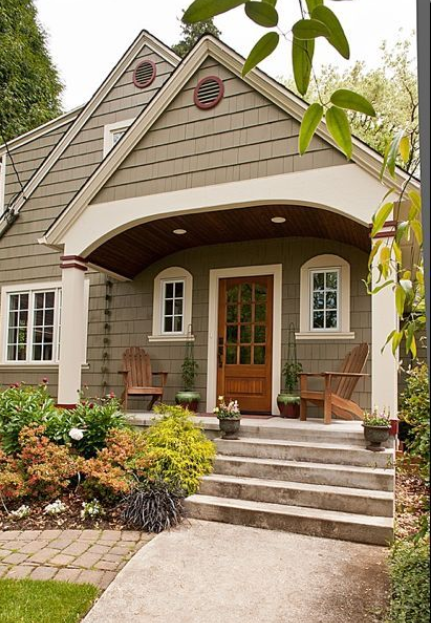
 Cheap rollers will shed fibres on to your careful prep work. Using a low quality, thin nap paint roller is another classic error. The roller will not be able to hold enough paint, and the final job will look streaky and uneven. When determining how much paint you will need, add the widths of the walls together and multiply by the room’s height for a square footage of the surface to be painted. Divide this figure by 350 (the square footage that a gallon typically covers) to determine the number of gallons. Remember that you need to do two coats, even if you are using top quality paint. With top quality paint, the second coat will not require as much paint as the first coat. This formula does not take doors and windows into account so you will have paint left over for touch-ups. Yes. You will need to do touch-ups. At this point you be beginning to see that a lot of work goes into doing a good paint job. Beautiful room designs deserve top quality paint, tools, techniques, and plenty of patience.
Cheap rollers will shed fibres on to your careful prep work. Using a low quality, thin nap paint roller is another classic error. The roller will not be able to hold enough paint, and the final job will look streaky and uneven. When determining how much paint you will need, add the widths of the walls together and multiply by the room’s height for a square footage of the surface to be painted. Divide this figure by 350 (the square footage that a gallon typically covers) to determine the number of gallons. Remember that you need to do two coats, even if you are using top quality paint. With top quality paint, the second coat will not require as much paint as the first coat. This formula does not take doors and windows into account so you will have paint left over for touch-ups. Yes. You will need to do touch-ups. At this point you be beginning to see that a lot of work goes into doing a good paint job. Beautiful room designs deserve top quality paint, tools, techniques, and plenty of patience.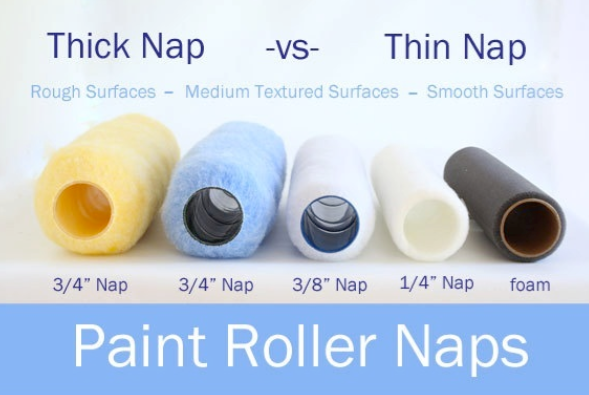
 Sheen choice is another critical aspect of a good paint job. In days past, we were limited to eggshell in high traffic areas due to washability issues. Nowadays we are able to use washable flat or matte sheen paints from some suppliers, such as Benjamin Moore. When you purchase a paint colour consultation through Mulberry Interiors an interior designer will use the Benjamin Moore paint chips for your colour consultation. Trim colours are still normally a higher sheen, not only for durability, but because we tend to prefer the look of a higher sheen baseboard and doors. Pearl sheen looks very good on trim work. Sometimes we use high gloss sheens for dramatic effect as seen below.
Sheen choice is another critical aspect of a good paint job. In days past, we were limited to eggshell in high traffic areas due to washability issues. Nowadays we are able to use washable flat or matte sheen paints from some suppliers, such as Benjamin Moore. When you purchase a paint colour consultation through Mulberry Interiors an interior designer will use the Benjamin Moore paint chips for your colour consultation. Trim colours are still normally a higher sheen, not only for durability, but because we tend to prefer the look of a higher sheen baseboard and doors. Pearl sheen looks very good on trim work. Sometimes we use high gloss sheens for dramatic effect as seen below. There are many factors involved in choosing the colour that the room will be painted. Surrounding elements can affect the shade the colour appears to be. This is especially true with lighter colours. The colour will also look different at different times of the day or evening. A red sofa will make surrounding white walls appear pink. Coloured sheers or unlined coloured curtains will reflect their colour on to the walls. The colour of the flooring can reflect up on to the walls and change the perceived shade at different times of the day. Curly fluorescent light bulbs will render almost any beautiful colour unpalatable to look at.
There are many factors involved in choosing the colour that the room will be painted. Surrounding elements can affect the shade the colour appears to be. This is especially true with lighter colours. The colour will also look different at different times of the day or evening. A red sofa will make surrounding white walls appear pink. Coloured sheers or unlined coloured curtains will reflect their colour on to the walls. The colour of the flooring can reflect up on to the walls and change the perceived shade at different times of the day. Curly fluorescent light bulbs will render almost any beautiful colour unpalatable to look at.  Never paint from the can as whatever dirt your brush picks up from the surroundings will end up on the wall in the form of specks and flecks. The paint in the tin will become thicker as you paint if the lid is off throughout the process. Limit your paint’s exposure to the air. Exposure to the air thickens the paint, creating drag during the application, producing brush strokes in the finish. Keep the lid on the can between fillings. The air will be reacting with the exposed paint, which is setting it up in the can, not on the wall. It is too easy to knock over a gallon tin of paint, and the full tin is heavy and unwieldy to carry around. You will have fresher, more liquid paint, and you will be less fatigued at the end of the job if you use only a small amount in a portable container at a time.
Never paint from the can as whatever dirt your brush picks up from the surroundings will end up on the wall in the form of specks and flecks. The paint in the tin will become thicker as you paint if the lid is off throughout the process. Limit your paint’s exposure to the air. Exposure to the air thickens the paint, creating drag during the application, producing brush strokes in the finish. Keep the lid on the can between fillings. The air will be reacting with the exposed paint, which is setting it up in the can, not on the wall. It is too easy to knock over a gallon tin of paint, and the full tin is heavy and unwieldy to carry around. You will have fresher, more liquid paint, and you will be less fatigued at the end of the job if you use only a small amount in a portable container at a time.
Some people prefer to paint edges freehand and others prefer to use painter’s tape. The secret to keeping paint from seeping under the edges of the tape is to heat-seal the tape. Run a tapered plastic tool quickly over the edge of the blue tape after you have applied it to your desired edge. This heats the edge of the tape, the waxy adhesive on the tape melts, and when it re-solidifies at the edge, a barrier is created that keeps the paint from creeping under the edge.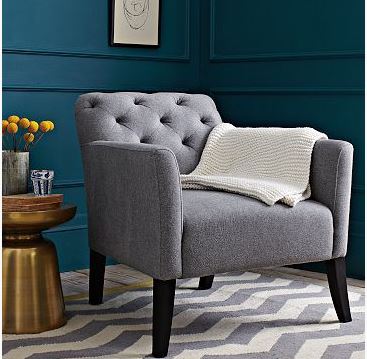 Dramatic paint colours such as black, deep purple and deep blue have become much more popular with clients lately. Clients who love colour but who had not dared to try a truly dramatic look are now more confident about daring colour choices. The finished room designs can be wonderful. One advantage of doing the painting yourself is that you can try a daring colour that you are unsure of. Many people only change the colour palette of their home every 6 or 7 years. By painting yourself, if you so desire, you can try a dynamic new colour every couple of years. It is still wise to use good quality paint, because the effect is so much nicer, and good quality paint is easier to use. You are able to change the look of your home with very current trends, if you choose to. Interesting graphic treatments such as striping or other geometrics can have a similar dramatic effect. Painting these effects is quite complex, and so would be expensive if done professionally. They take time, effort, and patience to achieve, but are well within the range of what an energetic do it yourselfer can achieve.
Dramatic paint colours such as black, deep purple and deep blue have become much more popular with clients lately. Clients who love colour but who had not dared to try a truly dramatic look are now more confident about daring colour choices. The finished room designs can be wonderful. One advantage of doing the painting yourself is that you can try a daring colour that you are unsure of. Many people only change the colour palette of their home every 6 or 7 years. By painting yourself, if you so desire, you can try a dynamic new colour every couple of years. It is still wise to use good quality paint, because the effect is so much nicer, and good quality paint is easier to use. You are able to change the look of your home with very current trends, if you choose to. Interesting graphic treatments such as striping or other geometrics can have a similar dramatic effect. Painting these effects is quite complex, and so would be expensive if done professionally. They take time, effort, and patience to achieve, but are well within the range of what an energetic do it yourselfer can achieve.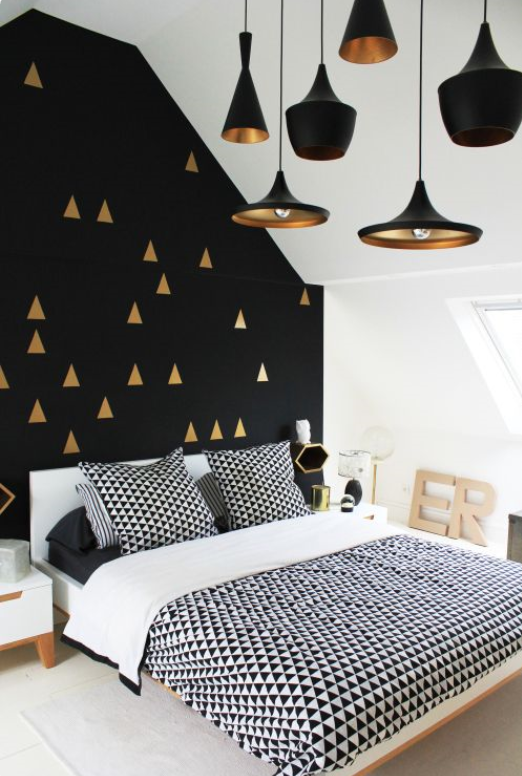 Good quality brushes are expensive and should be maintained. Use a 5-in-1 tool to remove excess paint from your brush. Simply scrape the paint off then wash brush in a solution made with one gallon warm water to one half cup fabric softener. This solution increases the dissolving ability of the water. Swish the brush through the solution for 10 seconds, allowing the paint to release into the water. Use a paintbrush spinner to spin water from the brush. To prevent soiling surrounding surfaces, do this inside a 5 gallon pail with an eight inch hole cut in the centre of the lid. Dry the brush with a small towel. Do not be tempted to wash brushes out with dish soap. This gums up the bristles and ferrule. Your brush will become softer each time you wash it this way. The fabric softener coats all parts of the brush allowing paint to flow effortlessly off it. This method also works for rollers but takes thirty seconds or so, and may require multiple dipping.
Good quality brushes are expensive and should be maintained. Use a 5-in-1 tool to remove excess paint from your brush. Simply scrape the paint off then wash brush in a solution made with one gallon warm water to one half cup fabric softener. This solution increases the dissolving ability of the water. Swish the brush through the solution for 10 seconds, allowing the paint to release into the water. Use a paintbrush spinner to spin water from the brush. To prevent soiling surrounding surfaces, do this inside a 5 gallon pail with an eight inch hole cut in the centre of the lid. Dry the brush with a small towel. Do not be tempted to wash brushes out with dish soap. This gums up the bristles and ferrule. Your brush will become softer each time you wash it this way. The fabric softener coats all parts of the brush allowing paint to flow effortlessly off it. This method also works for rollers but takes thirty seconds or so, and may require multiple dipping.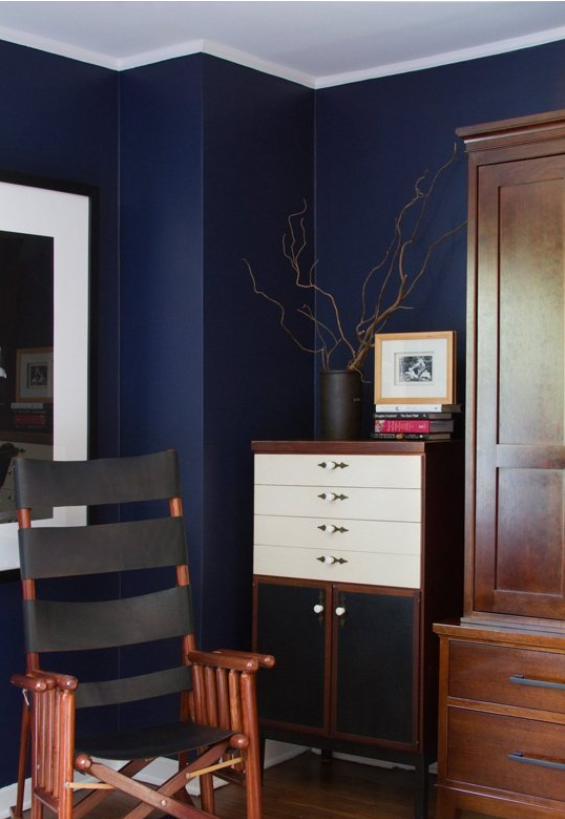 Many people simply are not do it yourselfers, and much prefer to hire a professional painter, especially once they realize how much work doing a good job of painting really is. There are also many people who have always painted their own homes, but as their lifestyles change, they simply do not have enough free time to fit painting in along with all of the other things that they do. Others have stopped enjoying doing all of this work themselves, and find it easier to make the money to pay a professional to do the painting. There is no shame in this. Sometimes, when listing a home for sale, time is of the essence, and a professional painter will be able to get the job done within a better time frame than the home owner can. That being said, once you have hired a painter, let them do their job. Realize that it takes time, and a lot of prep work must often be completed before any actual painting begins. Often at least 30% of a good paint job is the prep work. Lower quality painters are able to submit lower bids by doing less prep work. Don’t reward these guys by giving them the job. This is false economy. You likely won’t be satisfied with the results. Many of the lower quality painters will do a rush job. Do you really want your sofa or blinds splattered by a sloppy tradesperson? It takes time to lay down drop cloths and cover furniture. Before your painter begins work, de-clutter and clean the area. You may even wish to remove the switch plates yourself in order to speed up painting time.
Many people simply are not do it yourselfers, and much prefer to hire a professional painter, especially once they realize how much work doing a good job of painting really is. There are also many people who have always painted their own homes, but as their lifestyles change, they simply do not have enough free time to fit painting in along with all of the other things that they do. Others have stopped enjoying doing all of this work themselves, and find it easier to make the money to pay a professional to do the painting. There is no shame in this. Sometimes, when listing a home for sale, time is of the essence, and a professional painter will be able to get the job done within a better time frame than the home owner can. That being said, once you have hired a painter, let them do their job. Realize that it takes time, and a lot of prep work must often be completed before any actual painting begins. Often at least 30% of a good paint job is the prep work. Lower quality painters are able to submit lower bids by doing less prep work. Don’t reward these guys by giving them the job. This is false economy. You likely won’t be satisfied with the results. Many of the lower quality painters will do a rush job. Do you really want your sofa or blinds splattered by a sloppy tradesperson? It takes time to lay down drop cloths and cover furniture. Before your painter begins work, de-clutter and clean the area. You may even wish to remove the switch plates yourself in order to speed up painting time.
Remember, also that when comparing painters’ quotes that the quote should be detailed to avoid misunderstandings. Be sure that all painters that quote for you are quoting top quality, name brand paint, and that you see the lables on the tins that they bring to the job. The lower priced quotes may be specifying watery, inexpensive paint in order to get the job, and to make a higher margin. Professional painters should also be pleasant and treat you and your belongings with respect while they are in your home. If a designer has chosen paint colours for you, do not deviate from those choices in favour of the painter’s opinion. The painter is there to prep and paint, not choose colours. The same goes for your neighbours and your friends, nice though they are. It is YOUR home. What they prefer in their own home is what they should have. That has no bearing on what you prefer in YOUR home. You should have the colour palette that suits you and your family, even if your friends and neighbours like something other than that. Many clients lack confidence with colour choices, and professional painters, friends and neighbours should not further undermine the client’s confidence by adding their own opinions on colour.
Call Mulberry Interiors now at (905) 849-6423 to book a paint colour consultation. We can also refer excellent painters to you that will do a terrific job while maintain a professional presence in your home. We look forward to working with you to increase your enjoyment of your home.
Full Décor Service
Window Coverings including Draperies and Hunter Douglas Blinds
Colour Consultations a Specialty
Space Planning, Accessories, Lighting and Wall Art
Area Rugs

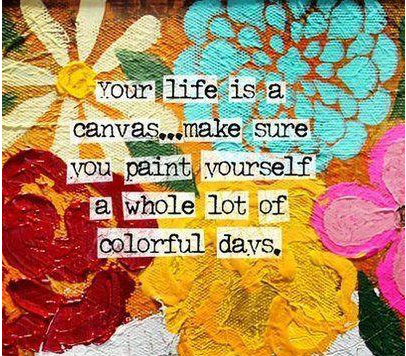
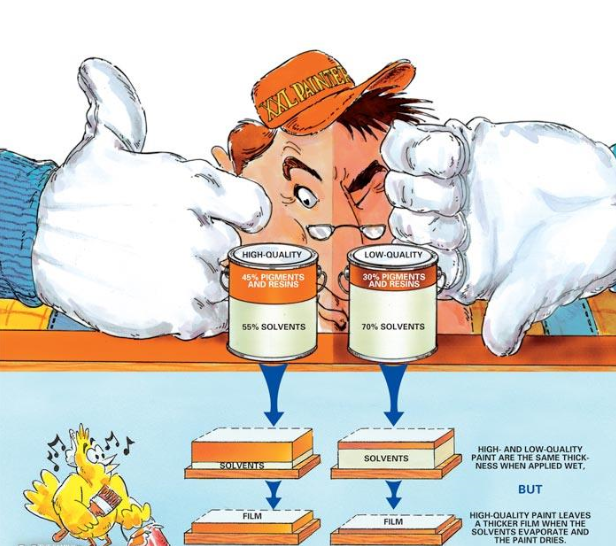 Cheap paint does not cover as well, so you’ll need more of it. This will take more time to apply and need more coats than applying top quality paint. This is poor economy whether you have hired a painter or if you are doing the painting yourself. Many people who buy cheap paint also try to complete the job in one coat. This results in a classic painting fail and looks terrible. Cheap paint has a chalky feel once dried. Top quality paint looks great, lasts well, is gently washable, and feels nice to the touch.
Cheap paint does not cover as well, so you’ll need more of it. This will take more time to apply and need more coats than applying top quality paint. This is poor economy whether you have hired a painter or if you are doing the painting yourself. Many people who buy cheap paint also try to complete the job in one coat. This results in a classic painting fail and looks terrible. Cheap paint has a chalky feel once dried. Top quality paint looks great, lasts well, is gently washable, and feels nice to the touch.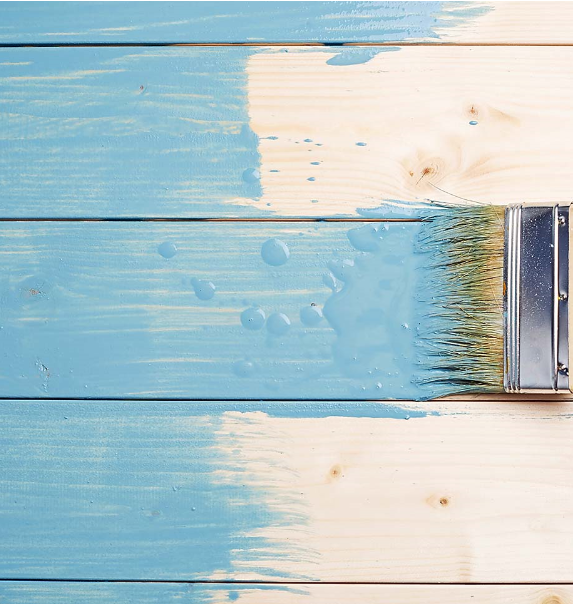 Some top quality paints are even “self-leveling”, which means that the paint is able to flow over surface flaws better than regular paints. This does not mean that prep work is no longer necessary, though. Some paints have technology which locks the pigment molecules into the body of the paint so that the paint job looks good much longer. This makes the paint gently washable so that when dirt accumulates around light switches and in areas of high traffic, you can wash those areas. Even matte sheen paints have become washable. Not scrubbable! Washable. The advantage of washable matte paints is that the paint finish on the wall is more elegant, due to the low sheen, but it can be cleaned. In days long ago, everyone used eggshell sheen so they could wash the walls. The old flat sheens were not washable at all. They became permanently shiny at wear points, like around light switches.
Some top quality paints are even “self-leveling”, which means that the paint is able to flow over surface flaws better than regular paints. This does not mean that prep work is no longer necessary, though. Some paints have technology which locks the pigment molecules into the body of the paint so that the paint job looks good much longer. This makes the paint gently washable so that when dirt accumulates around light switches and in areas of high traffic, you can wash those areas. Even matte sheen paints have become washable. Not scrubbable! Washable. The advantage of washable matte paints is that the paint finish on the wall is more elegant, due to the low sheen, but it can be cleaned. In days long ago, everyone used eggshell sheen so they could wash the walls. The old flat sheens were not washable at all. They became permanently shiny at wear points, like around light switches.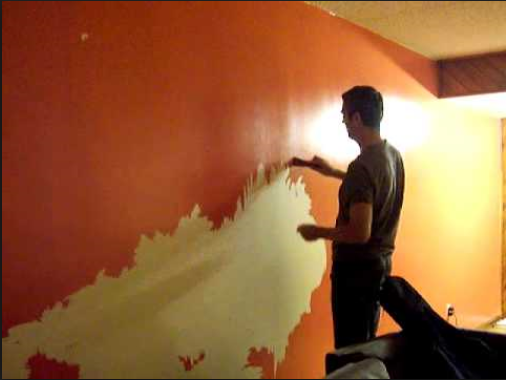 Prepping the surface is crucial. Be sure to use a conversion primer over oil painted surfaces before top coating with water based paints. The orange room above shows fresh paint peeling off the previous layer of paint. This surface was not properly prepared for painting. Water based paint was painted over oil based paint. It just will never adhere properly, and a proper primer should have been used before painting. Rushing or skipping prep work doesn’t save time. Rather, it adds work because you have to repaint, and before you can do that, you need to remove the layer of hastily added paint so the new coat will stick.Similarly, in the photo below, rough, peeling paint should have been sanded down smooth before new paint was applied. Notice that the paint looks chalky, as well. Great quality paint really does look better.
Prepping the surface is crucial. Be sure to use a conversion primer over oil painted surfaces before top coating with water based paints. The orange room above shows fresh paint peeling off the previous layer of paint. This surface was not properly prepared for painting. Water based paint was painted over oil based paint. It just will never adhere properly, and a proper primer should have been used before painting. Rushing or skipping prep work doesn’t save time. Rather, it adds work because you have to repaint, and before you can do that, you need to remove the layer of hastily added paint so the new coat will stick.Similarly, in the photo below, rough, peeling paint should have been sanded down smooth before new paint was applied. Notice that the paint looks chalky, as well. Great quality paint really does look better. 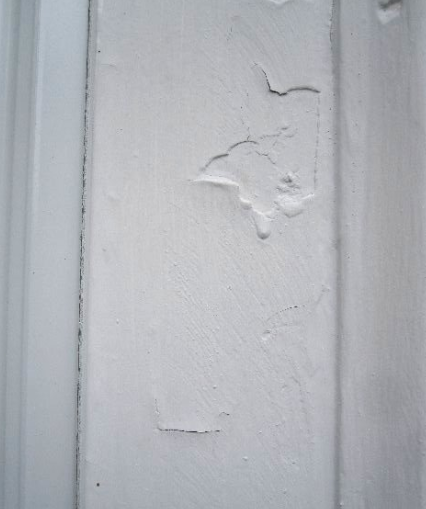 Prep work is also essential to the final outcome, whether it is the home owner or a professional painter doing the job. Surfaces to be painted must be properly prepped for a satisfactory job. Part of the prep work involved in a good job is filling gaps and cracks with a paintable caulk. Caulk around doors and windows, and along baseboards to fill gaps which have opened over time. Fill nail holes where pictures were hung and sand when dry. Prime coat the filled areas, as well. Surfaces should be clean, dry and low lustre. Flaking paint must be removed, holes filled with spackle and sanded perfectly, sanding dust wiped away, and dirt and grease thoroughly removed. Switch plates and other hardware should be removed also. Often a primer is necessary to cover stains and ensure uniform colour. This makes a huge difference to the appearance of the finished paint job.
Prep work is also essential to the final outcome, whether it is the home owner or a professional painter doing the job. Surfaces to be painted must be properly prepped for a satisfactory job. Part of the prep work involved in a good job is filling gaps and cracks with a paintable caulk. Caulk around doors and windows, and along baseboards to fill gaps which have opened over time. Fill nail holes where pictures were hung and sand when dry. Prime coat the filled areas, as well. Surfaces should be clean, dry and low lustre. Flaking paint must be removed, holes filled with spackle and sanded perfectly, sanding dust wiped away, and dirt and grease thoroughly removed. Switch plates and other hardware should be removed also. Often a primer is necessary to cover stains and ensure uniform colour. This makes a huge difference to the appearance of the finished paint job.